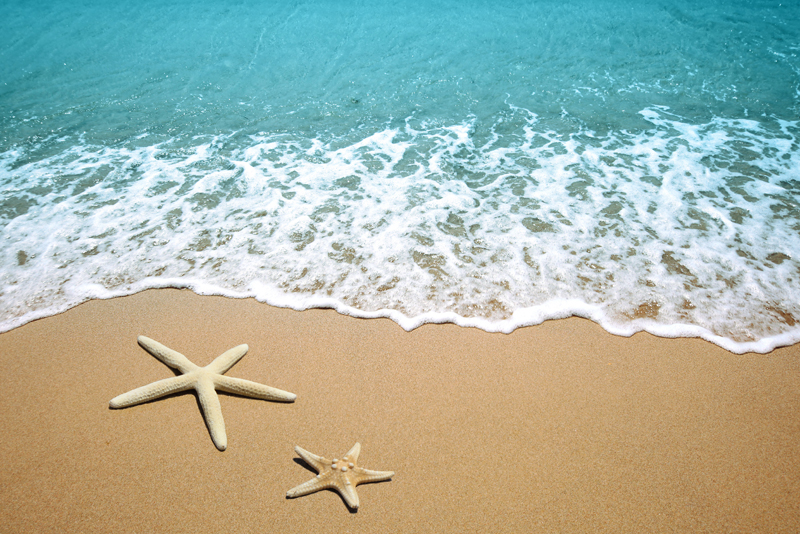A Brief History of Florida's Cabbage Key

Just off Florida’s Gulf Coast near Ft. Myers you’ll find the barrier islands of Sanibel, Captiva, North Captiva, and Cayo Costa. Near the mainland is Little Pine Island and Pine Island. The span of crystal clear, fertile waters that lie between Pine Island and the barrier islands is the Pine Island Sound. The chain of barrier islands separates the sound from the Gulf of Mexico. The Pine Island Sound is an aquatic preserve. The preserves water quality along with its abundant natural resources such as seagrass beds, wading and diving bird colonies, oyster beds, estuaries, fisheries, mangroves, dolphins, manatees, sea turtles, and sponge beds are all studied and monitored by preserve staff.
Amid this rich marine ecosystem of the Pine Island Sound, you find Cabbage Key. It is one of a dozen or more small keys and islands scattered within the sound. A Cay, or Caye, pronounced “key,” is a small, sandy, low-lying remnant of a coral island. Cabbage Key along with the other keys and islands in the Pine Island Sound are thought to be ice age sand dunes. Cabbage Key is only accessible by boat and this little tropical paradise, at a smidge over 100 acres, is one of the smaller islands in the Pine Island Sound.

Cabbage Key is in the Great Calusa Blueway and the Intracoastal Waterway. The Blueway is 190-miles of mapped out water routes for canoeists and kayakers. The Blueway covers three regions of the Gulf of Mexico coastline. The first portion meanders through Estero Bay; the second includes the Pine Island Sound and Matlacha (pronounced Mat-la-shay) Pass. A third route takes paddlers inland into the Caloosahatchee River and its tributaries. The Blueway is named for the local Native American Indian culture Calusa. The Calusa Indians lived and thrived for centuries off the rich waters and land of Florida’s Gulf Coast as fishers, gatherers, and hunters. Remnants of this unique culture can still be seen in the form of shell middens or mounds of mollusk shells, some reaching almost forty feet in height. The Calusa Indians inhabited Cabbage Key for several thousand years until the mid-1700s. Evidence of their culture remains today, particularly where the Cabbage Key Inn, restaurant, and bar are perched atop a shell midden or mound.
From the mid-1700s for almost a century, Cabbage Key was utilized as a Cuban fishing camp. All along Florida’s southwest coast Cuban fishing companies set up camps where fish were harvested, dried, salted and shipped to Havana. Over the next One Hundred-and Fifty-years Cabbage Key, also known as Palmetto Key, was bought and sold several times. As the ‘tropical island paradise’ appeal became popular with the rich and famous, it’s no wonder that the islands in the Pine Island Sound began to attract wealthy families looking for vacation hideaways to spend the winter months. This was the case with Cabbage Key which was purchased by Alan and Gratia Rinehart in 1936. Alan was the son of well-known American author and playwright of the early 1900s, Mary Roberts Rinehart. Mary was a frequent visitor to the Pine Island Sound area and enjoyed fishing for tarpon in the rich waters of the sound. Gratia, Alan’s wife, was heiress to the Corning Glass Works fortune. The Rinehart’s had a 4,500 square foot winter estate built on the island that was completed in 1937 along with several small cottage type buildings and the boathouse. Two years later in 1939 at age 34, Gratia succumbed to breast cancer, leaving two daughters ages 11 and eight behind.
After Gratia’s death Cabbage Key once-again went up for sale and was eventually purchased in 1944 by Jan and Larry Stults. The Stults would convert the Rinehart’s estate buildings into a small island inn to welcome guests. The Stults operated the island inn until 1969 when they decided to retire. The island would once again change hands over the years and eventually come into the hands of the Wells family in 1976, who continue to own it today. The island is listed on the National Register of Historic Places.
Rob Wells and his brother Ken have taken over the helm from their parents Rob and Phyllis and manage the resort, as well as the family, owned Tarpon Lodge and restaurant on Pine Island. Rob and Ken grew up on the island and have remained to carry on the family legacy of welcoming visitors to their little tropical paradise that exudes Old Florida Charm.
For more information on what Cabbage Key has to offer visitors click on the link below titled: Find Old Florida on Cabbage Key.
Amid this rich marine ecosystem of the Pine Island Sound, you find Cabbage Key. It is one of a dozen or more small keys and islands scattered within the sound. A Cay, or Caye, pronounced “key,” is a small, sandy, low-lying remnant of a coral island. Cabbage Key along with the other keys and islands in the Pine Island Sound are thought to be ice age sand dunes. Cabbage Key is only accessible by boat and this little tropical paradise, at a smidge over 100 acres, is one of the smaller islands in the Pine Island Sound.

Cabbage Key is in the Great Calusa Blueway and the Intracoastal Waterway. The Blueway is 190-miles of mapped out water routes for canoeists and kayakers. The Blueway covers three regions of the Gulf of Mexico coastline. The first portion meanders through Estero Bay; the second includes the Pine Island Sound and Matlacha (pronounced Mat-la-shay) Pass. A third route takes paddlers inland into the Caloosahatchee River and its tributaries. The Blueway is named for the local Native American Indian culture Calusa. The Calusa Indians lived and thrived for centuries off the rich waters and land of Florida’s Gulf Coast as fishers, gatherers, and hunters. Remnants of this unique culture can still be seen in the form of shell middens or mounds of mollusk shells, some reaching almost forty feet in height. The Calusa Indians inhabited Cabbage Key for several thousand years until the mid-1700s. Evidence of their culture remains today, particularly where the Cabbage Key Inn, restaurant, and bar are perched atop a shell midden or mound.
From the mid-1700s for almost a century, Cabbage Key was utilized as a Cuban fishing camp. All along Florida’s southwest coast Cuban fishing companies set up camps where fish were harvested, dried, salted and shipped to Havana. Over the next One Hundred-and Fifty-years Cabbage Key, also known as Palmetto Key, was bought and sold several times. As the ‘tropical island paradise’ appeal became popular with the rich and famous, it’s no wonder that the islands in the Pine Island Sound began to attract wealthy families looking for vacation hideaways to spend the winter months. This was the case with Cabbage Key which was purchased by Alan and Gratia Rinehart in 1936. Alan was the son of well-known American author and playwright of the early 1900s, Mary Roberts Rinehart. Mary was a frequent visitor to the Pine Island Sound area and enjoyed fishing for tarpon in the rich waters of the sound. Gratia, Alan’s wife, was heiress to the Corning Glass Works fortune. The Rinehart’s had a 4,500 square foot winter estate built on the island that was completed in 1937 along with several small cottage type buildings and the boathouse. Two years later in 1939 at age 34, Gratia succumbed to breast cancer, leaving two daughters ages 11 and eight behind.
After Gratia’s death Cabbage Key once-again went up for sale and was eventually purchased in 1944 by Jan and Larry Stults. The Stults would convert the Rinehart’s estate buildings into a small island inn to welcome guests. The Stults operated the island inn until 1969 when they decided to retire. The island would once again change hands over the years and eventually come into the hands of the Wells family in 1976, who continue to own it today. The island is listed on the National Register of Historic Places.
Rob Wells and his brother Ken have taken over the helm from their parents Rob and Phyllis and manage the resort, as well as the family, owned Tarpon Lodge and restaurant on Pine Island. Rob and Ken grew up on the island and have remained to carry on the family legacy of welcoming visitors to their little tropical paradise that exudes Old Florida Charm.
For more information on what Cabbage Key has to offer visitors click on the link below titled: Find Old Florida on Cabbage Key.
You Should Also Read:
Find Old Florida on Cabbage Key
Florida's Cayo Costa State Park

Related Articles
Editor's Picks Articles
Top Ten Articles
Previous Features
Site Map
Content copyright © 2023 by Hazel M. Freeman. All rights reserved.
This content was written by Hazel M. Freeman. If you wish to use this content in any manner, you need written permission. Contact Hazel M. Freeman for details.



